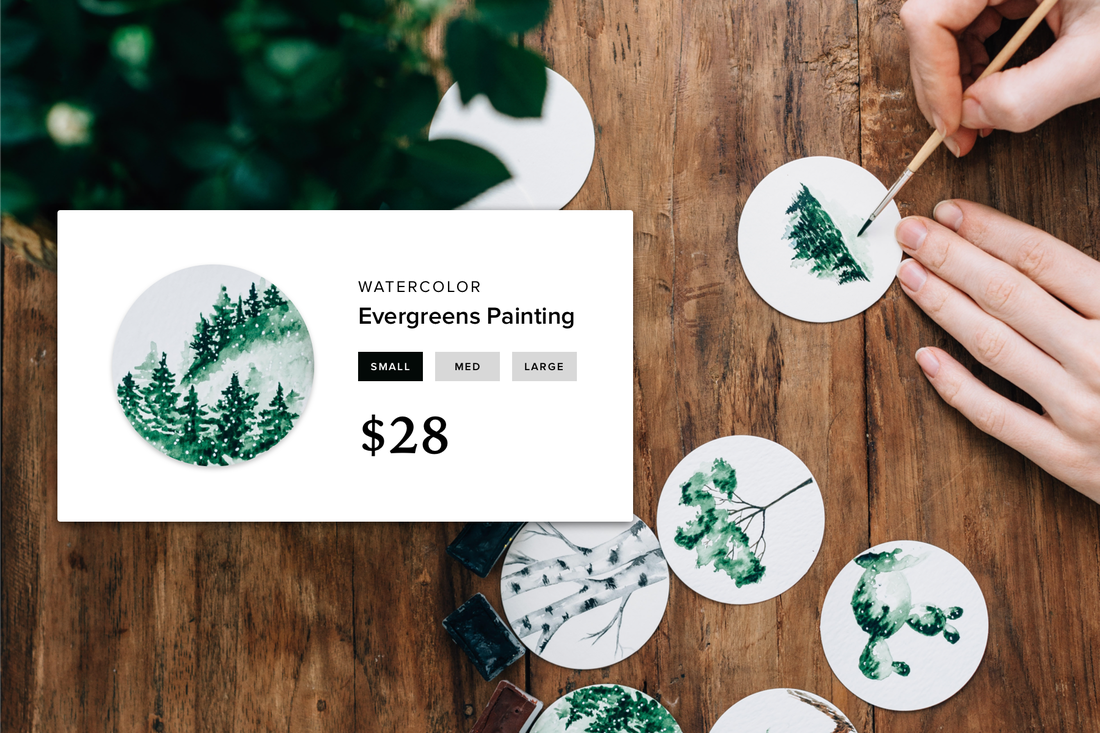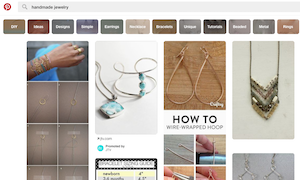Search engine optimization (SEO) is an important consideration when creating any website, but it can be a little confusing and overwhelming when you're just getting started. When it comes to SEO, most people know that including relevant keywords on the page can help search engines find your website's content, but SEO is more than just keywords.
Here are a few simple tricks to help a beginner make the most of SEO.
Use Image Alt Tags
Did you know that search engines can't “read" images? You have to help crawlers understand what is in the image to get the best from search optimization.
That's where an alt tag comes in. In HTML, it looks something like this:
Use Image Alt Tags
Did you know that search engines can't “read" images? You have to help crawlers understand what is in the image to get the best from search optimization.
That's where an alt tag comes in. In HTML, it looks something like this:
There are two important elements:
This strategy applies to all the photographs and illustrations on your website. If a visual is key to the content or message, search engines need to understand what is being displayed.
Don't Forget Metadata
This might sound confusing, but hang in there: Metadata is data about data. It's a backup explanation for what content elements are, what they do, and what information they contain.
Important SEO metadata includes title tags, page descriptions, robot instructions (such as “no follow" rules) and other descriptive content. Robot instructions and descriptive content elements are instructions for search engines, but the text never appears on your actual website. Think of metadata as information that works behind the scenes. But don't worry, you don't need to know how to code metadata. Just remember to fill in relevant fields with applicable descriptions when you're building your website pages.
Here's the trick to using metadata without overwhelming yourself and search engines. Forget a string of keywords like “shirts buy online shop" and opt for a simple, readable description for each element, from images to buttons to URLs. A retail shop, for example, may include a short description of items in the URL: yourshopname.com/womens-red-shorts. A good strategy is to add a similar description for all other elements on the same page. For other shop pages, change the descriptors to match the items on display.
An example of well used SEO metadata comes from mybomberjackets.com. Lets' look at the title tag on the homepage:
- The name of the image that you upload: Search engines read the photo name to help determine what's in the image. (You don't want to upload images with names like “IMG-234," when you can change them to include a title or descriptor.)
- The alt information: Search engines gather more data about the photo from this text. It should contain a keyword applicable to your content, while explaining the action or setting of the image (you can add your own alt tags from the Advanced tab after uploading an image).
This strategy applies to all the photographs and illustrations on your website. If a visual is key to the content or message, search engines need to understand what is being displayed.
Don't Forget Metadata
This might sound confusing, but hang in there: Metadata is data about data. It's a backup explanation for what content elements are, what they do, and what information they contain.
Important SEO metadata includes title tags, page descriptions, robot instructions (such as “no follow" rules) and other descriptive content. Robot instructions and descriptive content elements are instructions for search engines, but the text never appears on your actual website. Think of metadata as information that works behind the scenes. But don't worry, you don't need to know how to code metadata. Just remember to fill in relevant fields with applicable descriptions when you're building your website pages.
Here's the trick to using metadata without overwhelming yourself and search engines. Forget a string of keywords like “shirts buy online shop" and opt for a simple, readable description for each element, from images to buttons to URLs. A retail shop, for example, may include a short description of items in the URL: yourshopname.com/womens-red-shorts. A good strategy is to add a similar description for all other elements on the same page. For other shop pages, change the descriptors to match the items on display.
An example of well used SEO metadata comes from mybomberjackets.com. Lets' look at the title tag on the homepage:
This title tag uses simple, engaging language to introduce the brand and a relevant set of keywords that are on topic and meet searcher needs (and these keywords are used throughout the page). The site uses different title tags on each page to describe content in different ways, the about page title tag Made for craft beer bombers - Bomber Jacket makes good use of another descriptive keyword. In general you want to keep your title tags between 50-60 characters (that's the amount of text Google displays in search results).
Going back to the bomber jacket homepage, the page description (commonly referred to as the meta description) is also excellent.
Going back to the bomber jacket homepage, the page description (commonly referred to as the meta description) is also excellent.
The page description explains in further detail, using the "22 oz" keyword effectively and providing an enticing summary of the site and brand. Although these page descriptions aren't used as a ranking factor for keywords, they are one of the most important elements for getting someone to click on your site from search, since they provide detailed information about your site. Recommended length is between 150-160 characters (again, the amount of text displayed in Google search results).
Speak Search "Language"
Search seemingly has a “language" of its own. That language correlates to your website's content, your audience and how people actually search for the information your site offers.
When you are writing website copy and filling in metadata, think about the type of queries people might enter into a search engine and how that language might sound. If you were researching cars, what words would you use? Car, auto, automobile, hot rod? The most formal language is not always the best option. Use the same words that your users would say and search. Use Google's free Keyword Tool to see how people commonly search for different topics.
Some slang terms are acceptable, if they are widely used. Regional dialogues probably won't rank highly in search engines. This language is the reason some musicians create stage names or businesses opt for quirky spellings — it makes their brand easy to “read" online. (Try it: search “pink" and then “p!nk.")
Consider PPC
Pay per click, or PPC, is paid advertising that drives users to your website. For most businesses a combination of PPC and organic (unpaid) search traffic can be the right mix.
Here's how PPC works:
Social Media Impact
Social media is more than memes and gifs. It can be an SEO tool as well. Social media posts can help reinforce your keywords while sending users to your website.
Plan strategically so that your social media pages are engaging and attract your target audience. Use the 80/20 rule to determine what type of content to display. Make sure 80 percent is user-friendly and fun, and 20 percent drives users to buy something or interact with your website. Both types of posts should use the same keywords as your website.
The other important factor when it comes to social media and search engine optimization is linking of profiles. Try to use a common name across channels and link each of the channels to one another.
Speak Search "Language"
Search seemingly has a “language" of its own. That language correlates to your website's content, your audience and how people actually search for the information your site offers.
When you are writing website copy and filling in metadata, think about the type of queries people might enter into a search engine and how that language might sound. If you were researching cars, what words would you use? Car, auto, automobile, hot rod? The most formal language is not always the best option. Use the same words that your users would say and search. Use Google's free Keyword Tool to see how people commonly search for different topics.
Some slang terms are acceptable, if they are widely used. Regional dialogues probably won't rank highly in search engines. This language is the reason some musicians create stage names or businesses opt for quirky spellings — it makes their brand easy to “read" online. (Try it: search “pink" and then “p!nk.")
Consider PPC
Pay per click, or PPC, is paid advertising that drives users to your website. For most businesses a combination of PPC and organic (unpaid) search traffic can be the right mix.
Here's how PPC works:
- When you buy ads with a service such as Google AdWords, your business appears with search results when users search for certain keywords that you have specified. Ads can be small or large and contain different amounts of information. To the untrained user, these listings look very much like search results and can help direct traffic to your site.
- Higher traffic and user flows help you rank higher in search overall, leading to a more optimized website.
- You are charged a specific amount, based on the keywords selected, for each ad click. (This is where the name pay-per-click comes from.)
Social Media Impact
Social media is more than memes and gifs. It can be an SEO tool as well. Social media posts can help reinforce your keywords while sending users to your website.
Plan strategically so that your social media pages are engaging and attract your target audience. Use the 80/20 rule to determine what type of content to display. Make sure 80 percent is user-friendly and fun, and 20 percent drives users to buy something or interact with your website. Both types of posts should use the same keywords as your website.
The other important factor when it comes to social media and search engine optimization is linking of profiles. Try to use a common name across channels and link each of the channels to one another.
Lenny Boy Brewing Company links to Facebook and Twitter accounts from the top of its homepage and links to the homepage in the description of social media sites. This cross-linking establishes that all three websites are actually part of the same company and branding.
Developing a search engine optimization strategy starts with great content, but there are a few tricks that you can use to help boost your search results. When building your website, remember to think about the way users speak and search and use these keywords throughout the site design, particularly in all the additional field options available to you.
Developing a search engine optimization strategy starts with great content, but there are a few tricks that you can use to help boost your search results. When building your website, remember to think about the way users speak and search and use these keywords throughout the site design, particularly in all the additional field options available to you.
 Carrie Cousins Carrie is a designer, writer and content marketer. She works full time in college media at EMCVT and has more than 10 years of media and marketing experience.
Carrie Cousins Carrie is a designer, writer and content marketer. She works full time in college media at EMCVT and has more than 10 years of media and marketing experience.









